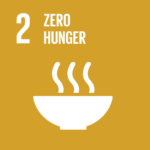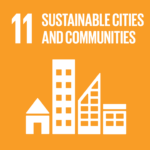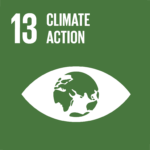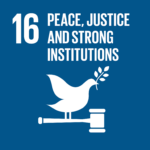City government of East Jakarta transforms violence-prone communities into green hubs to boost food resilience and environmental stewardship.
In a bold and unconventional move, East Jakarta’s municipal government is inviting former participants of tawuran—a term for violent street brawls among youths—into the world of urban farming. The initiative, led by Acting Mayor Iin Mutmainnah, seeks not only to build food security but also to offer a constructive alternative for marginalized youth often caught in cycles of violence.
“Even our friends who were previously involved in tawuran, I will invite them to engage in urban farming,” Iin said on Thursday in Jakarta. “They need to see how farming can be both fun and beneficial.”
RELEVANT SUSTAINABLE GOALS




A Citywide Vision for Urban Resilience
The urban farming program is part of a broader vision to promote sustainability, reduce food insecurity, and reframe how citizens, particularly the youth, interact with their environment. Beyond mere cultivation, the initiative promises community transformation—one vegetable patch at a time.
Jakarta Timur is also partnering with Bogor Agricultural Institute (IPB), a leading agricultural university, to provide expert support. The collaboration will offer technical education on plant types and production optimization, empowering community groups with science-backed strategies.
“I’ll use IPB as a benchmark and bring in communities passionate about urban farming,” said Iin.
To sustain interest and amplify public engagement, the city is also developing agro-tourism as a learning platform. These agro-tourism spots—spread across rooftops, community farms, RPTRAs (Child-Friendly Integrated Public Spaces), and even under flyovers like the Becakayu Toll Road—will offer visitors immersive experiences in sustainable farming.
“We’ll create packaged agro-tourism programs centered on learning about urban farming,” said Iin. “All districts have urban farming locations. The largest is in Cipayung due to its available land area, but each district contributes.”
2.9 Tons of Hope: A Citywide Harvest
In the lead-up to Eid al-Fitr 1446 Hijriah, East Jakarta held a coordinated harvest across 100 urban farming sites in its 10 districts. The results were impressive: 2.3 tons of agricultural produce—including chili, eggplant, pakcoy, tomato, broccoli, and more—and 599 kilograms of fish like tilapia, catfish, and pangasius were gathered.
The large-scale harvest underscored the tangible outcomes of the initiative, which has grown from local passion projects into an organized municipal strategy.
This is not merely an environmental project—it’s a social innovation. Urban farming provides structure, purpose, and new opportunities for youth historically marginalized or involved in violent behavior. It is a proactive response to systemic urban challenges: youth unemployment, food insecurity, and environmental degradation.
As climate pressures, population growth, and urban sprawl continue to challenge Indonesian cities, Jakarta Timur’s approach represents a grassroots solution with scalable potential.
For now, in the alleys, rooftops, and flyover shadows of East Jakarta, seedlings are replacing scars—and conflict is giving way to cultivation.
You may also be interested in :
Impact Funding Opportunities For April 2025 | Grants & Investments




